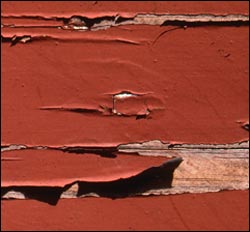Lead paint claims dismissed
By: David Ziemer, [email protected]//November 16, 2010//
 U.S. District Court Judge Rudolph T. Randa has granted summary judgment in favor of the remainder of the defendants named in a lead paint suit under the risk contribution rule.
U.S. District Court Judge Rudolph T. Randa has granted summary judgment in favor of the remainder of the defendants named in a lead paint suit under the risk contribution rule.
The rule permits imposition of liability on defendants based on market share in an industry, despite a lack of evidence of direct causation.
On June 15, Randa had granted summary judgment to Atlantic Richfield Co. (ARCO), concluding that it would violate substantive due process to impose liability on a manufacturer who never actually manufactured lead paint, but only succeeded to liability through a series of mergers.
That opinion left open the possibility of liability on behalf of the other defendants. However, on motion for reconsideration, Randa predicted that the reasoning would apply with equal force to all defendants.
On Nov. 15, consistent with that prediction, he concluded that it did, and entered judgment for the defendants.
Milwaukee attorney Peter G. Earle, who represents the plaintiff, said he would appeal to the 7th Circuit.
The ultimate issues that court will have to decide, Earle said, is whether a substantive due process right is even implicated, and if so, whether the Wisconsin Supreme Court rationally pursued a state interest in adopting the risk contribution rule in Thomas v. Mallett, 2005 WI 129, 285 Wis.2d 236, 701 N.W.2d 523 (2005).
After the decision in Thomas, suit was brought on behalf of Ernest Gibson, a minor injured by lead paint ingestion, pursuant to the risk contribution rule, and the case was removed to federal court.
In June, Judge Randa granted summary judgment in favor of ARCO, applying Eastern Enterprises v. Apfel, 524 U.S. 498 (1998).
Although Eastern Enterprises was a fragmented opinion, with the justices disagreeing on the appropriate framework to analyze whether retroactive liability is constitutional, Randa concluded that a majority of justices “generally agreed on a substantive standard that should apply to retroactive liability.”
Randa framed the issue as “whether the risk contribution rule threatens to impose (1) severe (2) retroactive liability on a (3) limited class of parties that (4) could not have anticipated the liability, and whether the extent of that liability is (5) substantially disproportionate to the parties’ experience.”
Randa found that the result was the same, regardless of whether the individual defendant was only a successor-in-interest, or an active participant in the manufacturer of lead paint.
Randa explained, “All of the defendants (or their predecessors-in-interest) stopped manufacturing white lead carbonate pigment years before the risk contribution rule could have been anticipated, if it was even possible to predict such a development prior to the ruling in Thomas. All of the defendants face substantial liability through the cumulative effect of multiple lawsuits, including those that are currently pending and those that could potentially be re-filed. And by eliminating the traditional causation requirement in tort, the only potential connection between Gibson and the defendants under the risk contribution theory is that the defendants (or their predecessors-in-interest) produced or marketed white lead carbonate for use at some point during the relevant and expansive time period: the duration of the houses’ existence.”
On appeal, Earle said he intends to argue that, “any substantive due process right needs to be based on more than a property interest; a party must show a fundamental right in addition to that, or an inadequacy in state law remedies, which was not demonstrated here.”
Earle noted that Judge Randa rejected that argument, because this case involved a substantive defense, rather than an affirmative claim. Earle said he intends to argue to the 7th Circuit that the distinction is not relevant.
The case is Gibson v. American Cyanamid Co., et al., No. 07-C-864.
David Ziemer can be reached at [email protected].
Legal News
- (Updated) Wisconsin law enforcement clash with pro-Palestinian Madison protestors
- Gov. Evers seeks applicants for Lafayette County Circuit Court
- Complaint against University filed by Wisconsin law firm over $1.9M given to Palestinian students
- Hush money trial judge raises threat of jail as he finds Trump violated gag order, fines him $9K
- Active shooter ‘neutralized’ outside Wisconsin middle school
- Audit finds Wisconsin Capitol Police emergency response times up, calls for better tracking
- Jury finds Wisconsin man sane in sexual assault, killing of toddler
- Attorney sentenced to 20 years in prison for sexually exploiting numerous children
- UW-Madison pro-Palestine protesters spark debate over free speech laws
- DEA to reclassify marijuana in a historic shift
- Wisconsin opens public comment on constitutional amendment regarding election officials
- Court upholds Milwaukee police officer’s firing for posting racist memes
WLJ People
- Power 30 Personal Injury Attorneys – Russell Nicolet
- Power 30 Personal Injury Attorneys – Benjamin Nicolet
- Power 30 Personal Injury Attorneys – Dustin T. Woehl
- Power 30 Personal Injury Attorneys – Katherine Metzger
- Power 30 Personal Injury Attorneys – Joseph Ryan
- Power 30 Personal Injury Attorneys – James M. Ryan
- Power 30 Personal Injury Attorneys – Dana Wachs
- Power 30 Personal Injury Attorneys – Mark L. Thomsen
- Power 30 Personal Injury Attorneys – Matthew Lein
- Power 30 Personal Injury Attorneys – Jeffrey A. Pitman
- Power 30 Personal Injury Attorneys – William Pemberton
- Power 30 Personal Injury Attorneys – Howard S. Sicula











